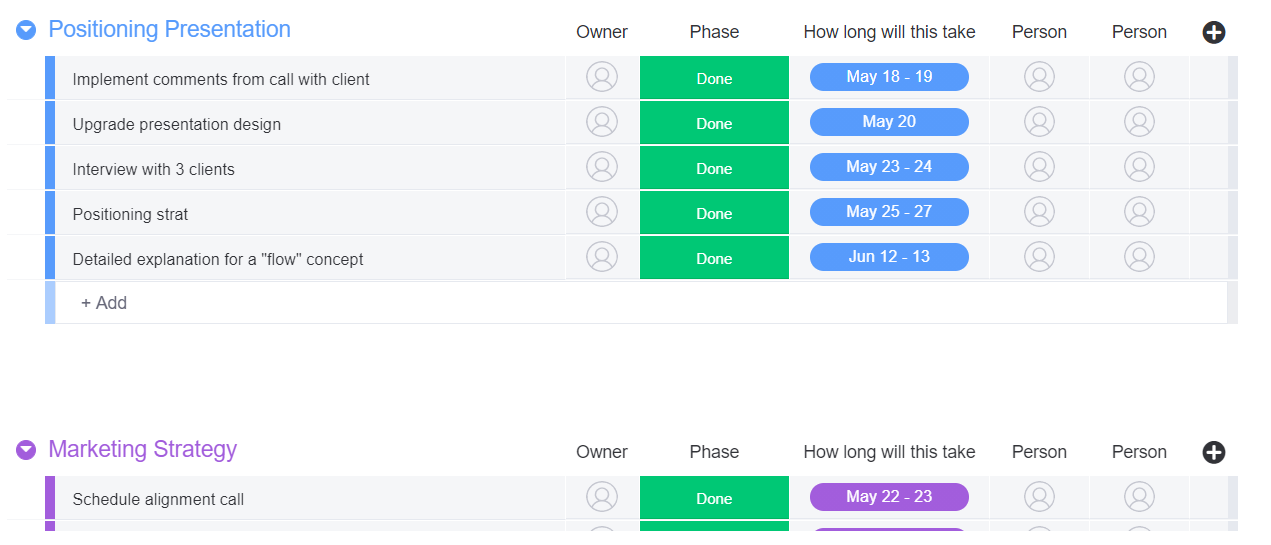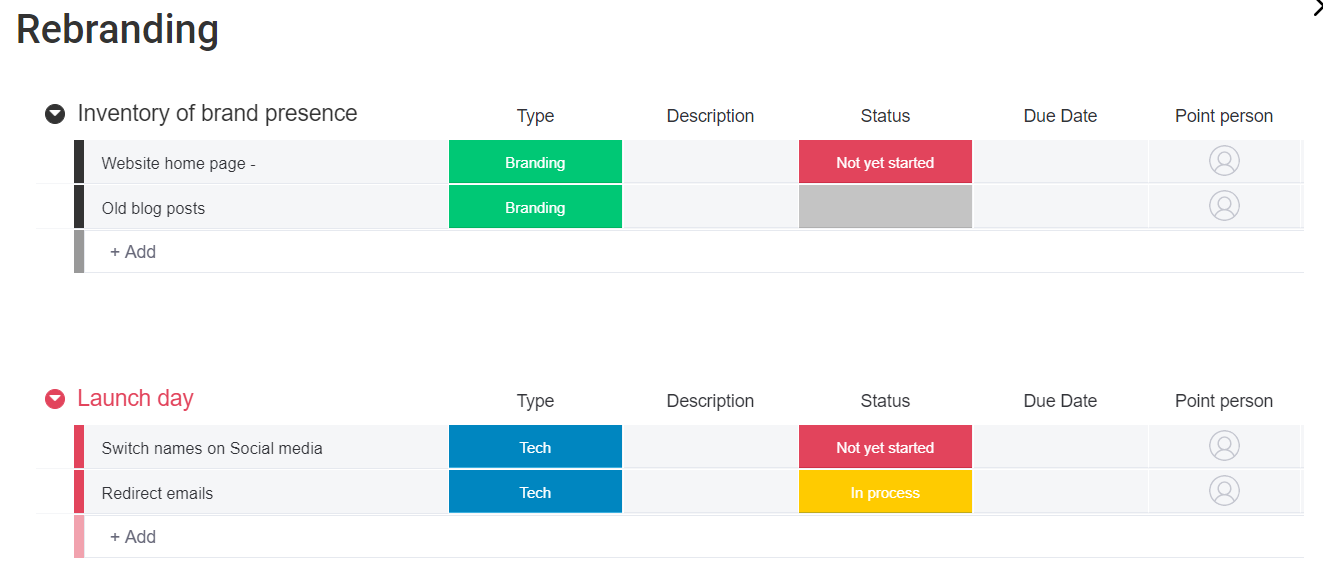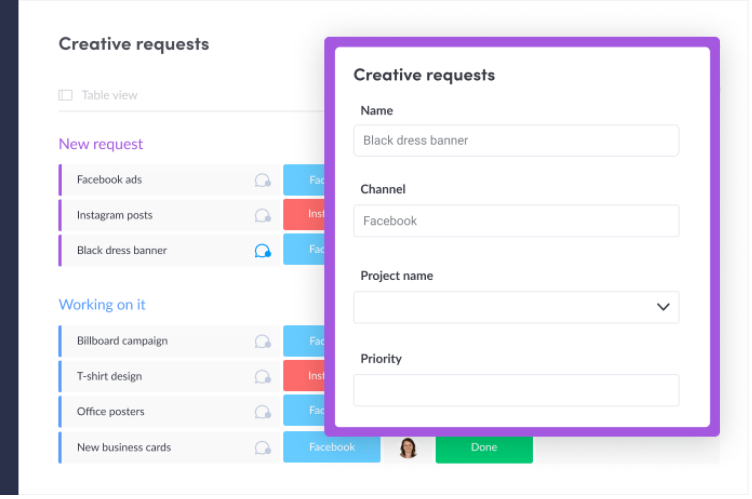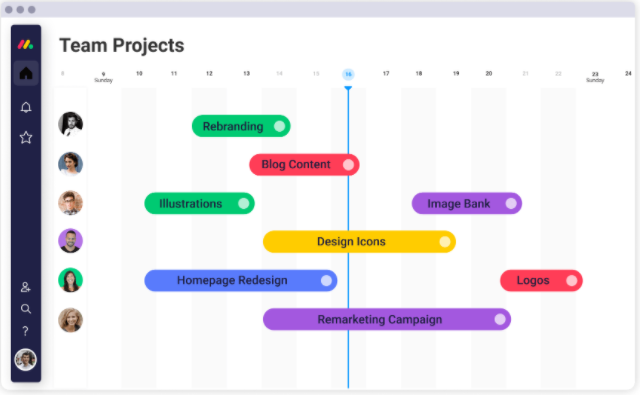There’s a reason people line up around the block for the latest iPhone release.
And oddly, it’s the same reason why seeing the Golden Arches immediately makes you think of chicken McNuggets and Big Macs.
What is this powerful force that draws us into buying the latest products from these big names?
It’s brand management.
Brand management is the secret sauce for every company whose color, logo, or jingle conjures up a specific feeling.
It can increase revenue and inspire customer loyalty for years.
But brand management isn’t a quick or easy marketing ploy. It’s a detailed, thorough process of understanding what your brand stands for and making sure every single piece of your business represents that brand.
We’ve broken down the key parts of brand management for you in this beginner’s guide. We’ll walk you through what brand management is and how to develop an effective brand strategy.
Plus, we’ve got a few ideas for how to make managing your brand as easy as possible.
What is brand management?
In a nutshell, brand management is the set of strategies companies use to cultivate how their brand is perceived.
It’s all of the marketing, design, and customer interaction that makes you think of Coca-Cola as the pinnacle of soft drinks or Rolex as an elegant, luxury watch brand.
A strong brand is important because consumers make split-second decisions based on brand recognition. They’ll choose a product they’re familiar with and feel they know something about over a product with unclear or inconsistent branding.In fact, brand consistency increases revenue by 33%.
That’s because consumers aren’t just drawn to brands for split-second, one-time purchases. They become repeat customers and loyal brand ambassadors that help amplify that brand even further.
As your brand gains recognition, it can even allow you to charge more for your product — people are willing to pay more for a product they know and trust.
But good branding doesn’t just happen. You need an intentional brand management strategy that creates the perception you want for your company.
At the heart of this strategy is your target audience. 40% of marketers say customers are the most important influence on brand perception and visibility. What your customers think matters more than anything your marketing team creates or intends.
That’s why every part of your business needs to be aligned under your branding strategy. Every time a customer interacts with any part of your company, they need to be met with the same brand appearance and values.
Branding should be incorporated into all of your project planning and workflows, like in this project management template from monday.com.

We’ll go more in depth on how to use a platform like monday.com for effective brand management later on, but we just wanted to reassure you — there’s an easy way to manage all of the pieces of your brand.
Before we get into that, though, let’s dive a little deeper into the nitty-gritty of brand management.
Key elements of brand management
Brand management covers a lot of ground.
It has to account for every time and place that a customer interacts with your company, from social media to product packaging and customer service.
To help you hone in on the most important pieces of your brand strategy, we’ve outlined 5 key elements of brand management.
1. Brand identity
Your brand identity is all of the tangible pieces that make your brand recognizable.
This can include your logo, brand colors, jingle, mascot, and anything else that customers can see and recognize as yours.
Brand identity sets your company apart from competitors. It draws new customers in while helping existing customers know they’re in the right place.
Keep in mind that brand identity is how you want your brand to be perceived, but brand image is how customers actually perceive you.
This is a subtle difference, but a crucial one. Good brand management constantly looks at how the brand wants to be perceived and makes sure it’s aligned with how the brand is perceived.
2. Brand personality
Brand personality includes the tone, voice, and style of your brand.
A simple way to think about it is to ask yourself how you would describe your brand if it were a person.
Is your brand funny and quirky? Formal and serious? Casual and self-deprecating?
Cultivating a consistent brand personality helps you appeal to your target market. You want your brand to be a personality that your ideal customers can easily relate to.
Another key piece of brand personality is your brand values. 52% of people say they’re attracted to brands that authentically share their personal values and stand up for social issues, so don’t be afraid to incorporate that into your brand personality.
3. Brand positioning
While your brand identity and personality do a lot to make your brand recognizable to consumers, you still need to think purposefully about how your brand is situated among competitors.
This is called brand positioning. It includes everything that makes your brand unique in relation to the competition.
Your brand positioning should highlight your unique value proposition: what do you do better than all of your competitors?
This should be a primary focus of your branding strategy.
Because brand positioning is so important to effective brand management, be sure to pay special attention to it when creating your strategy. You can use a template like this one from monday.com to help you organize all of your brand positioning tasks.

Brand positioning gives customers a reason to pay attention to you because you’re setting yourself apart from other brands in your industry or niche.
Strong brand positioning goes a long way toward increasing the perceived value of your products or services. The more unique your brand seems to be, the more consumers will be willing to pay for it.
4. Brand equity
Brand identity, personality, and positioning all contribute to another key element of brand management: brand equity.
Brand equity is the perceived value of your brand. It measures how much influence your brand name has over customers.
For example, companies like Band-Aid and Kleenex have such strong brand equity that their brand names are equivalent to the product itself for many consumers.
Brand equity can be tricky to measure. It’s easiest to look at financial metrics, like market share, transaction value, and revenue generation.
But things like a consumer’s emotional connection to your brand or how they assess the quality of your product contribute to brand equity too.
You can leverage your brand equity into increased prices by offering a highly branded and unique experience. Consumers will pay a premium for a product or experience they feel is guaranteed quality and aligns with their values.
Don’t underestimate the importance of brand values to your company and brand equity. 69% of people say they want brands to express their values, making values a key consideration for virtually every brand manager.
5. Brand assets
Brand assets are possibly the most important piece of your brand strategy.
These are the truly unique elements that make customers think of your brand and only your brand — without even seeing your company name.
The Golden Arches, the Nike Swoosh, and Flo from Progressive are all excellent examples of true brand assets.
A brand asset can be a logo, slogan, jingle, or even a celebrity or influencer endorsement. They will all be part of your brand identity, but not every part of your brand identity is a brand asset.
Influencer endorsements in particular are becoming increasingly valuable brand assets. 63% of 18-34 year olds will trust an influencer’s recommendation over claims from the brand itself.
Because brand assets have such a strong influence on how the brand is perceived, everyone in the company should have a good understanding of and easy access to these assets.
One way to do this is to have a shared file folder in a platform like monday.com, where anyone who needs them can refer to the brand assets.

How to build an effective brand strategy
Brand management is a purposeful, consistent, and ongoing process.
The most successful brands, like the ones we’ve used as examples throughout this guide, have dedicated brand managers and clear strategies that regularly ensure every part of the business is embodying the brand’s identity, personality, and values.
But starting a brand management strategy is a big task. That’s why we’re going to walk you through the most important steps to effective brand management.
Before we dive into each step though, allow us to recommend using monday.com to track each part of your brand strategy.
Since there are so many overlapping and moving parts to brand management, monday.com can provide a single source of truth for your branding projects, like in the rebranding template shown below.

You can customize templates like this to support any and all parts of your brand management strategy. There’s a lot more you can do on this platform too — more on that later.
But first, let’s look at the basic steps to creating an effective branding strategy.
1.Define your brand objective. Before you start picking brand colors or brainstorming logos, you need to have a clear picture of your ideal brand. If your brand management strategy works perfectly, how will your brand be perceived?
Consider the brand identity and personality that we discussed earlier as you create your brand objective.
2.Identify your target customers and define their journey. Who will your brand appeal to most? Create buyer personas that give you a clear picture of your ideal customer and what they care about.
Then, think about what path they will take to find and buy from your brand. Do they start on social media? Will they purchase online or in-store? Don’t be afraid to go back to your brand objective and fine-tune it to make sure your ideal branding aligns with your ideal customer.
3.Research competitors to ensure you stand out. Take a look at your entire industry or niche and determine what makes your company different. This is your unique value proposition. It should form the cornerstone of your entire brand management strategy.
4.Develop creative brand guidelines. Now that you have a clear vision of your brand and how it stands out, it’s time for the fun stuff. Choose colors, design a logo, compose a jingle — just make sure every single piece of your branding aligns with your original objective. The 4 C’s are so important when it comes to supporting your overall brand strategy: clarity, consistency, content, and connection.
5.Consistently evaluate your brand equity, recognition, and loyalty. Brand management is an ongoing process. Every business decision should be made in light of branding considerations.
Even without a major business decision at hand, you should regularly take time to evaluate how your actual brand perception lines up with your brand objective, and make adjustments as needed.
Lastly, you’ll need to empower employees to act as brand ambassadors. 73% of people say customer experience is a key factor in their brand loyalty, highlighting how branding must be a part of every department.
You can use a platform like monday.com to accomplish this by customizing workflows and requesting forms to include branding considerations, like in the example below.

monday.com makes brand management easier
monday.com is a powerful software for brand management because it can be a single source of truth for all of your brand guidelines and assets.
File sharing and collaboration tools make it easy to keep everyone on the same page as your brand evolves and grows. Anyone who interacts with customers can access the same information to provide brand consistency to your target market.
Because monday.com is an all-in-one Work OS, you can incorporate relevant brand considerations into the workflows for any department. Everyone from HR to IT to sales can present the same brand identity and personality to every customer.
monday.com works for more than just brand management too. Its robust project management and task management tools will work for any department in your business.
The work planning features include several different views, like Kanban boards, list views, and a timeline view like the one below.

monday.com also integrates with the tools you already use.
For example, marketing teams can integrate with Mailchimp to manage their email campaigns — and access all the brand assets they need to make sure their email sequences align with your brand vision.
Conclusion
Brand management is critical for setting your company apart.
Good brand management increases revenue and boosts customer loyalty, raising the value of your brand and growing your business even further.
But brand management is complex, and you need an easy way to keep track of every element of your brand strategy.
monday.com helps you incorporate your brand into every facet of your company with its all-in-one Work OS. Start managing your brand with monday.com today.


